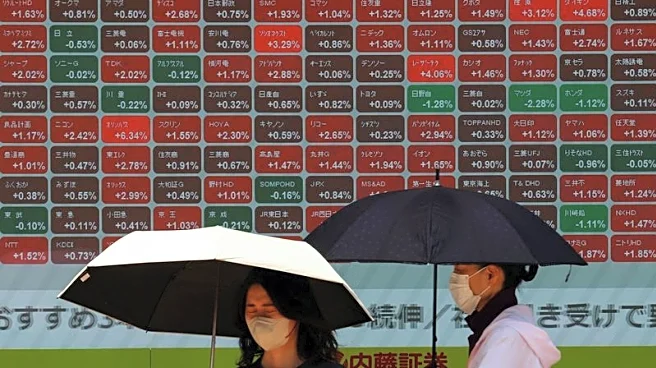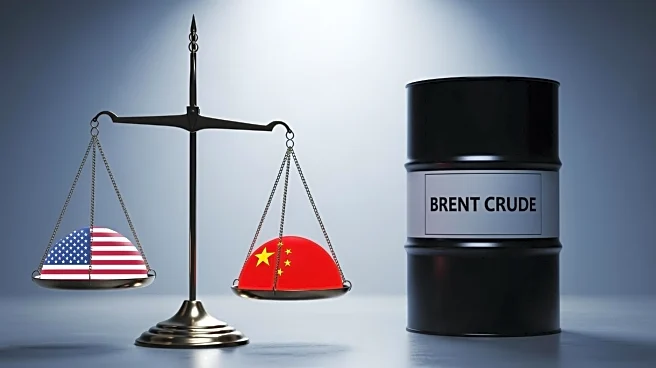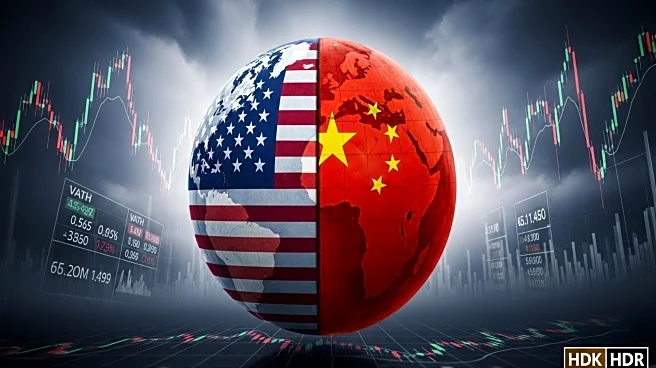What's Happening?
Oil prices have fallen due to renewed trade tensions between the United States and China, coupled with an anticipated surplus in the global oil market. The U.S. benchmark, WTI Crude, dropped to $58 per barrel, while Brent Crude fell below $62 per barrel.
China's recent sanctions on U.S. subsidiaries of Hanwha Ocean have exacerbated trade jitters, impacting global oil demand. The market is also facing a record glut in the coming months, further pressuring oil prices. President Trump plans to meet with Chinese President Xi Jinping to address these tensions.
Why It's Important?
The decline in oil prices amid U.S.-China trade tensions has significant implications for the global economy and oil demand. Lower oil prices can affect the profitability of oil producers and impact investment in the energy sector. The trade tensions add uncertainty to the market, potentially slowing economic growth and reducing demand for oil. The situation highlights the interconnectedness of global trade and energy markets, with geopolitical factors influencing economic stability. Stakeholders in the oil industry must navigate these challenges to maintain market balance.
What's Next?
President Trump's upcoming meeting with Chinese President Xi Jinping may offer an opportunity to ease trade tensions and stabilize the oil market. However, the ongoing trade war and anticipated oil market glut suggest continued volatility in oil prices. Industry leaders are closely monitoring geopolitical developments and market trends to adjust their strategies. The potential for further sanctions or trade measures could impact oil demand and supply dynamics, requiring adaptive responses from oil producers and policymakers.














